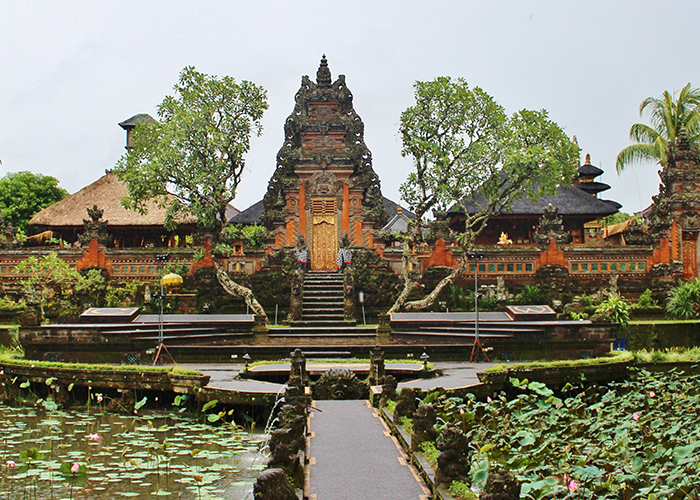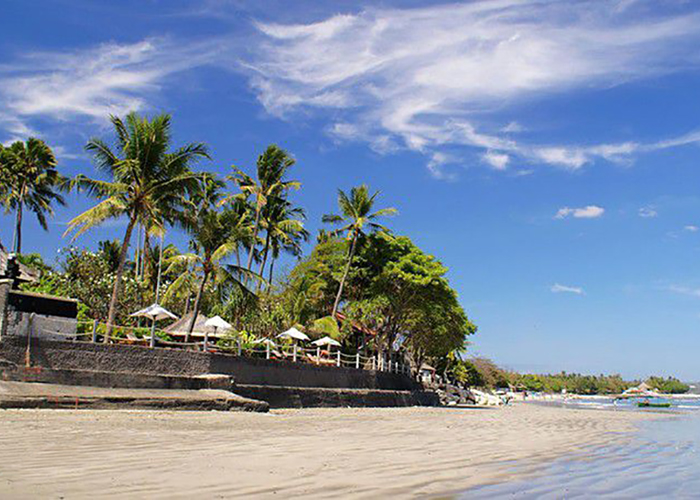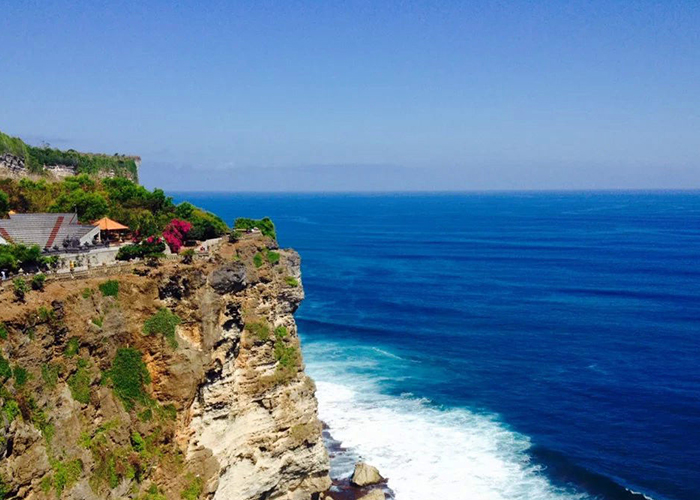Bali, Indonesia
Bali, the famed "Island of the Gods", stakes a serious claim to be
paradise on earth. Its diverse landscape of mountainous terrain, rugged coastlines
and sandy beaches, lush rice terraces and barren volcanic hillsides provide a
picturesque backdrop to its colourful, spiritual and unique culture. The cultural
landscape of the Bali province has been inscribed on the UNESCO World Heritage
list.With world-class diving and surfing, a range of natural, cultural and
historical attractions, and plentiful accommodation options, it is one of the most
popular island destinations in the world. Award-winning Bali offers something to
almost every visitor from the backpacking youth to the ultra wealthy.
Culture
Bali is renowned for its diverse and sophisticated art forms, such as
painting, sculpture, woodcarving, handcrafts, and performing arts. Balinese
cuisine is also distinctive. Balinese percussion orchestra music, known as
gamelan, is highly developed and varied. Balinese performing arts often
portray stories from Hindu epics such as the Ramayana but with heavy
Balinese influence. Famous Balinese dances include pendet, legong, baris,
topeng, barong, gong keybar, and kecak (the monkey dance). Bali boasts one
of the most diverse and innovative performing arts cultures in the world,
with paid performances at thousands of temple festivals, private ceremonies,
or public shows.
Climate
Being just 8 degrees south of the equator, Bali has a fairly even climate year
round. Average year-round temperature stands at around 30°C with a humidity
level of about 85%. Day time temperatures at low elevations vary between
20–33°C (68–91°F), but the temperatures decrease significantly
with increasing elevation. The west monsoon is in place from approximately October
to April, and this can bring significant rain, particularly from December to March.
During rainy season there is comparatively fewer tourists seen on Bali. During the
Easter and Christmas holidays the weather is very unpredictable. Outside of the
monsoon period, humidity is relatively low and any rain is unlikely in lowland
areas.
Cuisine
Bali has a huge variety of cafes and restaurants, serving both Indonesian and
international food. Try the smaller local restaurants (called warungs) rather than
touristy ones; the food is better and cheaper. Be sure to try the ubiquitous
Indonesian dishes nasi goreng (fried rice), nasi campur (pronounced nasi champur,
steamed rice with various vegetables and meats), and mie goreng (fried noodles).
These dishes should rarely cost more than Rp 25,000 and are often considerably
cheaper. Some of the most authentic food can be found from roving vendors called
kaki lima, which literally means "five legs". This comprises the three
legs of the food cart and the vendor's own two legs. Go to the beaches of Kuta,
Legian and Seminyak at sunset and find steaming hot bakso, a delightful meatball and
noodle soup, served up fresh for a very inexpensive Rp 5,000. You can season it
yourself but be forewarned: Indonesian spices can be ferociously hot. Go easy until
you find your heat tolerance level!
Tourism
The tourism industry is primarily focused in the south, while significant in the
other parts of the island as well. The main tourist locations are the town of Kuta
(with its beach), and its outer suburbs of Legian and Seminyak (which were once
independent townships), the east coast town of Sanur (once the only tourist hub),
Ubud towards the center of the island, to the south of the Ngurah Rai International
Airport, Jimbaran, and the newer developments of Nusa Dua and Pecatu.Bali received
the Best Island award from Travel and Leisure in 2010. Bali won because of its
attractive surroundings (both mountain and coastal areas), diverse tourist
attractions, excellent international and local restaurants, and the friendliness of
the local people. According to BBC Travel released in 2011, Bali is one of the
World's Best Islands, ranking second after Santorini, Greece.
Pura Tanah Lot

Puri Saren

Kuta Beach

-
Uluwatu







